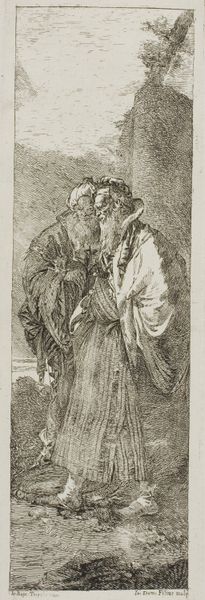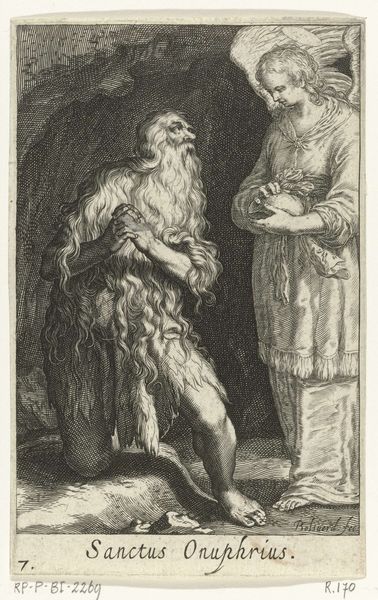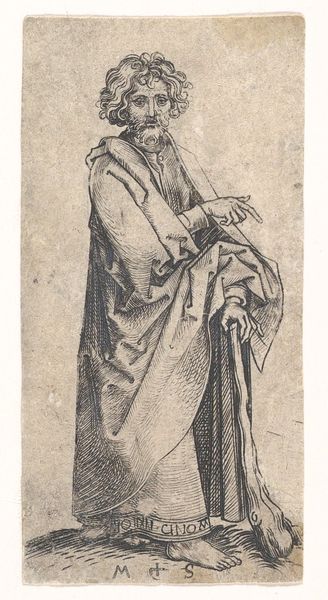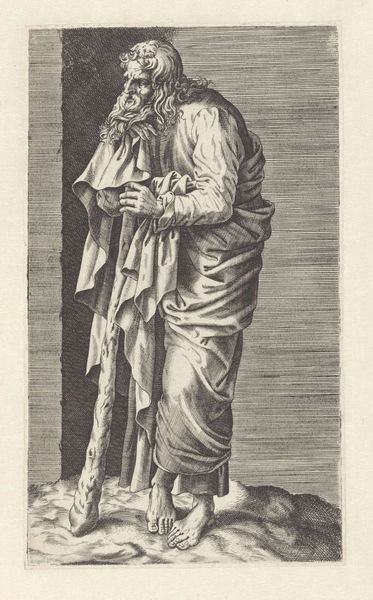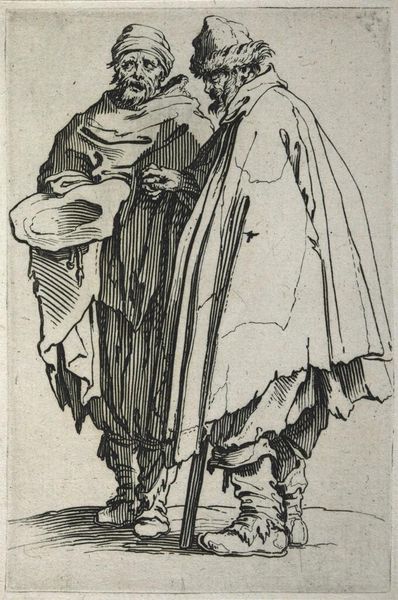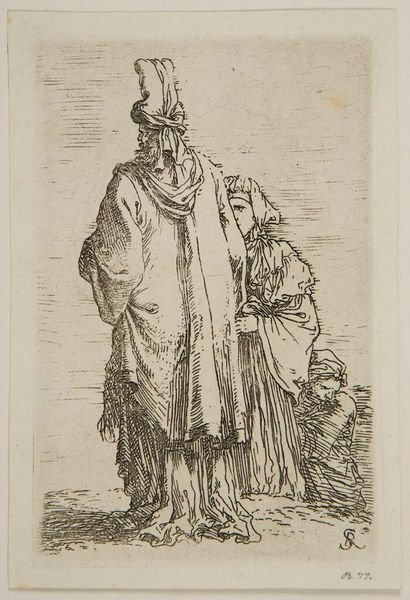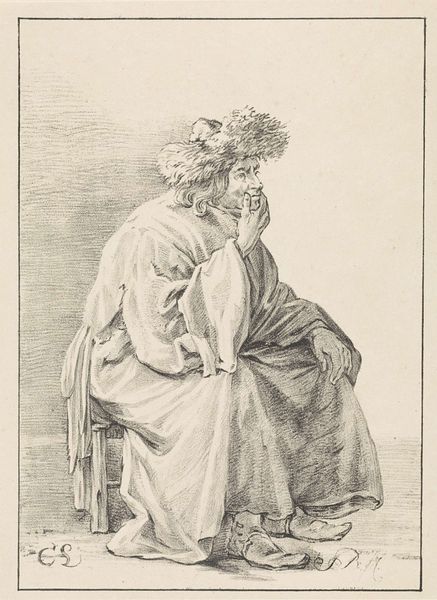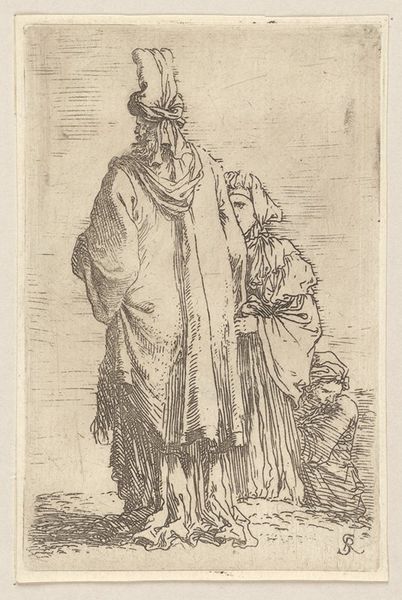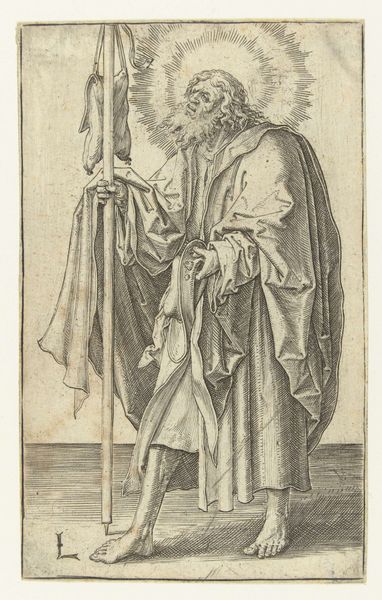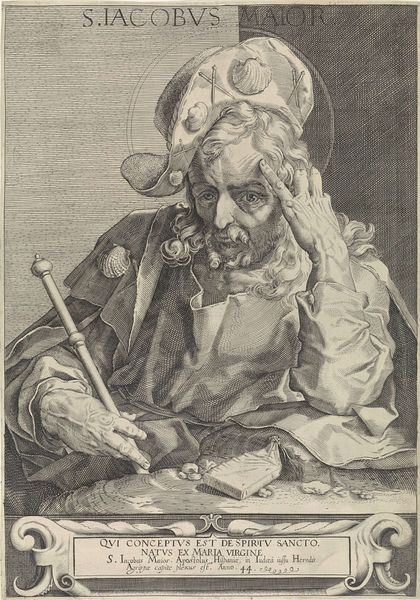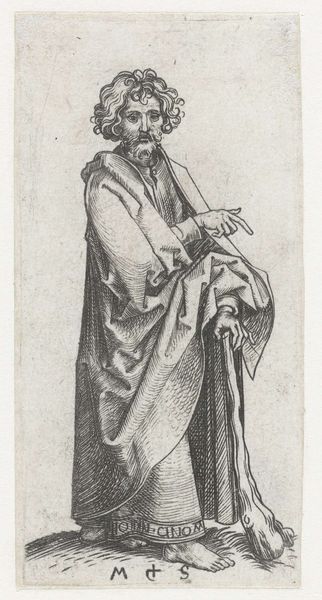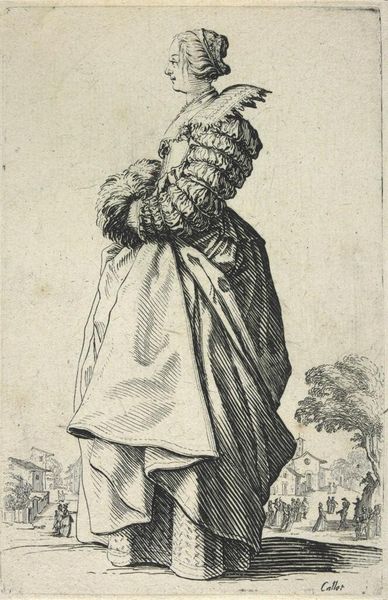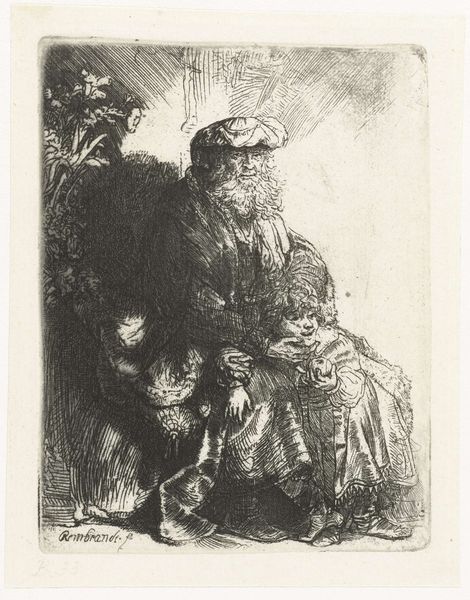
drawing, print, etching, paper, ink, engraving
#
pencil drawn
#
drawing
#
baroque
# print
#
pen sketch
#
etching
#
pencil sketch
#
charcoal drawing
#
figuration
#
paper
#
ink
#
pencil drawing
#
line
#
history-painting
#
engraving
Dimensions: height 261 mm, width 77 mm
Copyright: Rijks Museum: Open Domain
Editor: This is Giovanni Domenico Tiepolo’s “Companions of Rinaldo on the banks of the Orontes,” a drawing made between 1743 and 1747. The scene, rendered in ink and etching, seems secretive, almost conspiratorial. What sort of power dynamics are at play here, hidden beneath the surface? Curator: I’m immediately drawn to how Tiepolo uses the visual language of the Baroque to perhaps subtly critique societal structures of his time. Look at the clear class distinctions represented by the characters' clothing and posture, it hints at a hierarchy and privilege, especially in the historical context. How might this scene, taken from Tasso's *Jerusalem Delivered*, reflect on colonialism or the exoticization of the "Orient" at that time? Editor: So, the location itself, the river Orontes, becomes a stage for exploring these colonial themes? I see what you mean about the exoticism - their dress code makes it seem like these are men from two distinct cultural backgrounds coming together. Curator: Precisely! And I’d suggest looking into the figure of Rinaldo himself. Consider his identity within the narrative. Is he a symbol of Western power imposing itself upon the East, or is there perhaps an ambivalence, a critique of such simplistic narratives of conquest, that we might discern in Tiepolo’s work? Editor: I didn’t initially read that tension. Viewing this in our contemporary moment, this historical lens highlights the ways power and cultural exchange can become intertwined, making simple, unbiased interactions quite rare. Curator: Yes! Thinking about Tiepolo’s context encourages us to critically re-evaluate what we thought we knew about this period and what those old representations are still able to teach us about today. Editor: Absolutely. Now, I see that it isn’t merely a historical depiction, but an interrogation of how cultures interact, negotiate, and sometimes clash. Thank you, that expanded my view quite a bit!
Comments
No comments
Be the first to comment and join the conversation on the ultimate creative platform.
